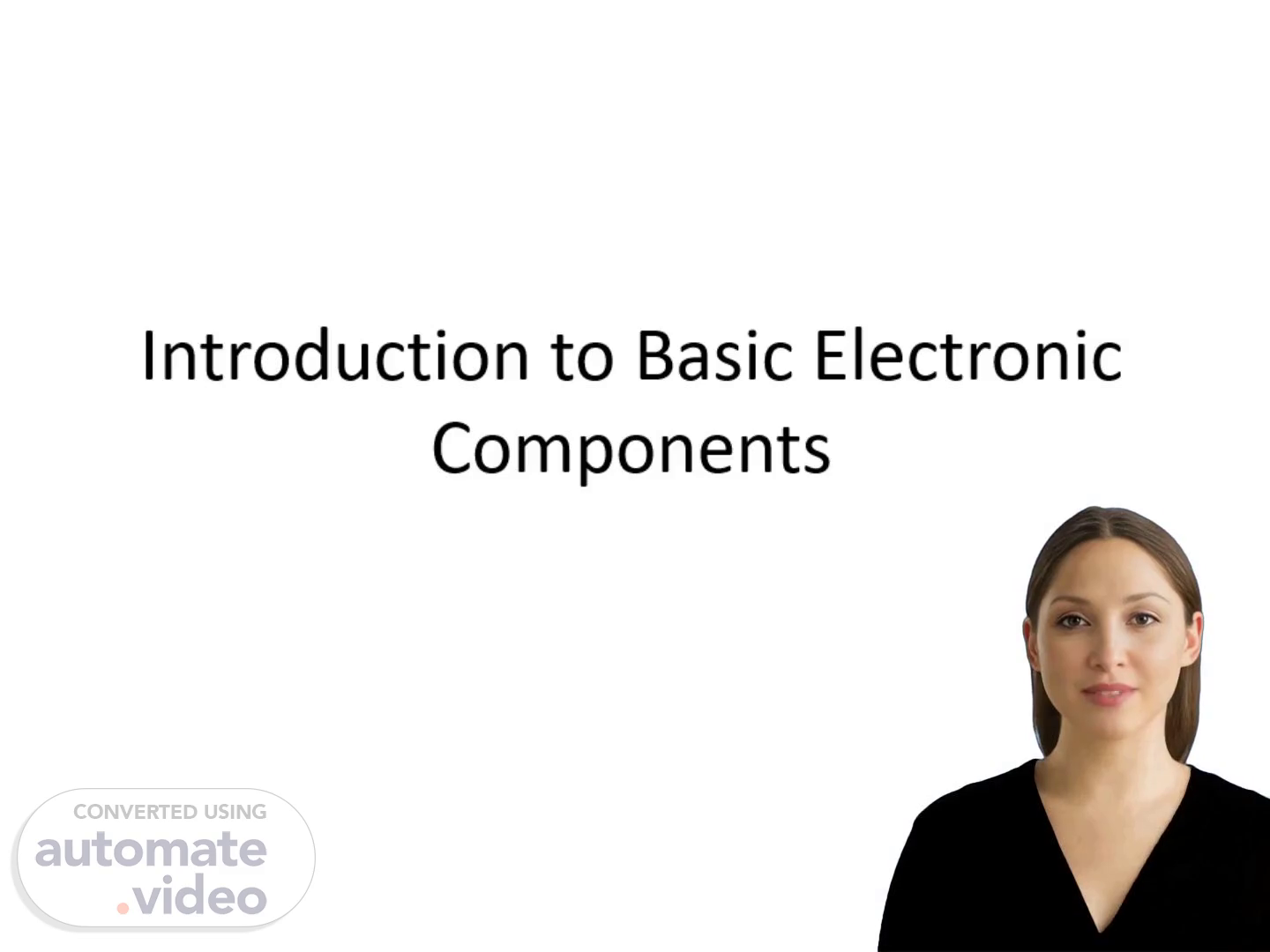Scene 1 (0s)
[Virtual Presenter] The presentation will cover the fundamental principles of electronics. Understanding these basics is crucial as we navigate through the complex world of circuitry and devices. This course will focus on the essential components that are the foundation of electronics, including transistors and integrated circuits. We will begin our exploration now..
Scene 2 (21s)
[Audio] A resistor is a fundamental component in electronics that plays a crucial role in controlling the flow of electric current. Its primary function is to resist the flow of current, thereby regulating the voltage and current levels within a circuit. The symbol used to represent a resistor is Ω, also known as the Ohm, which is its unit of measurement. In terms of applications, resistors are widely used for voltage division and current control purposes. By carefully selecting and combining resistors, engineers can design circuits that meet specific requirements, such as maintaining a stable voltage level or limiting excessive current flow..
Scene 3 (56s)
[Audio] A capacitor is a fundamental component in electronic circuits. It stores electrical energy in an electric field. This means that it can hold onto electrical charge, allowing it to release it when needed. The symbol used to represent a capacitor is F, with its unit being Farads. Capacitors have various applications, including filtering, smoothing, and timing. They help remove unwanted frequencies from signals, regulate voltage levels, and control the duration of events. By understanding capacitors and their uses, we can better grasp the basics of electronics and how they work together to create complex systems..
Scene 4 (1m 35s)
[Audio] An inductor is a component that plays a crucial role in electronic circuits by storing energy in a magnetic field when current flows through it. Its symbol is represented by the letter L, not H, with its unit being Henry. The primary uses of an inductor include filtering, energy storage, and tuning..
Scene 5 (1m 55s)
[Audio] A diode is a fundamental electronic component that plays a crucial roles in various applications. Its primary function is to allow current to flow in one direction only, making it an essential element in controlling the flow of electrical energy. There are several types of diodes, including PN diodes, Zener diodes, and LEDs. These devices have distinct characteristics and uses, such as rectification, voltage regulation, and indication. In rectification, diodes convert AC power to DC power, ensuring that electronic devices receive a stable and consistent supply of electricity. Voltage regulation involves using diodes to regulate the voltage levels within a circuit, preventing damage to sensitive components. Indication refers to the use of diodes as indicators or warning lights in various systems. Overall, diodes are versatile components that contribute significantly to the functioning of modern electronics..
Scene 6 (2m 51s)
[Audio] A transistor is an electronic component that can either amplify or switch electronic signals. Types of transistors include NPN, PNP, and MOSFET. Transistors have various applications such as signal amplification, switching electronic signals, and signal modulation..
Scene 7 (3m 11s)
[Audio] An integrated circuit, commonly referred to as an IC, is a compact collection of electronic components that are fabricated onto a small chip of semiconductor material. This technology has revolutionized the field of electronics by allowing numerous components to be combined into a single device, thereby reducing size, increasing efficiency, and enhancing performance. The uses of ICs are diverse and widespread, with applications ranging from microprocessors that control the flow of data within computers to amplifiers that boost weak electrical signals, and logic gates that perform complex logical operations. These versatile devices have become essential building blocks in modern electronics, enabling the creation of sophisticated systems and circuits that would be impractical or impossible to achieve with discrete components alone..
Scene 8 (4m 1s)
[Audio] A switch is a fundamental component in electronics that enables the control of the flow of electrical current in a circuit. It can either manually or automatically open or close the circuit path. Different types of switches are available, including SPST, SPDT, and push-button switches. The purpose of these switches varies depending on their design and application. Understanding the basics of switches is essential for designing and building electronic devices..
Scene 9 (4m 29s)
[Audio] A battery is a vital component in any electronic circuit. It provides direct current power to the circuit, enabling devices to operate. The types of batteries mentioned comprise AA, Coin Cell, and Li-ion. These batteries vary in their dimensions, form, and chemical makeup, yet they all serve the same basic objective of supplying energy to the circuit..
Scene 10 (4m 51s)
[Audio] Now that we have covered the basics of electronic components, let's take a moment to reflect on what we have learned. Basic components are indeed the foundation of electronics, and understanding them is crucial for building and designing electronic systems. As we move forward, it's essential to explore how these components interact with each other in circuits. This will give us a deeper understanding of how electronic systems work and enable us to design more complex and efficient systems. We must not forget that our knowledge of basic components is just the beginning, and there is much more to learn about electronics. I appreciate your attention, and I hope you'll continue to learn and grow in this field..
